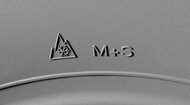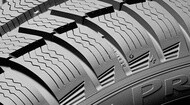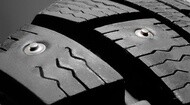
Learn
Do I need winter tires?
Whether you're a first-time car owner, new to Canadian winters, or just want to learn more about winter tires, you're in the right place. There are all sorts of different tires that can be used to conquer the harsh road conditions that winter throws our way. So, to make the process a bit easier for you, we put together a winter tire buying guide which includes all of the basics when it comes to winter tires. Read on to learn more.
Are winter tires really necessary?
If you frequently encounter snow or ice, or if the temperature consistently approaches freezing, your tires need the extra grip and turning capabilities that only winter tires can deliver. Even if you have 4-wheel-drive or all-wheel-drive, you still need winter tires on the front and back to conquer the elements and stay safe.
Winter tires are designed to perform better in a wide range of wintry conditions such as wet roads, snow and ice. They also improve your vehicle's grip and performance in these conditions and they shorten your braking distances for better safety.
Braking distance on slippery, cold, wet or icy roads | Michelin Winter Driving Academy
Winter, all-season and summer tires

In cold temperatures, summer tires do not provide the performance that winter road conditions require. They are made with different materials optimized for warmer conditions and they can, for instance, harden under cold temperature, thus lowering their gripping ability. Summer tires have difficulty gripping the road in snow or icy conditions.
All-season tires are designed to be driven year-round, but if you live in an area with severe winter conditions (heavy snow or ice), they may not be sufficient. All-season tires are designed to perform well in a large range of conditions, but not to handle the worst.
Winter tires can provide you with the extra grip you need to get through deeper snow or ice-covered roads.
Look for the Three Peak Mountain Snowflake & M+S Symbols
When choosing your tires, if you see a small mountain symbol with a snowflake inside, this is known as the Three Peak Mountain Snowflake (3PMS) symbol. Essentially, what it means is that that specific tire was tested in severe snow conditions and either met, or exceeded industry standards and performance requirements. This symbol can be found on winter tires.
On the other hand, M+S stands for mud and snow. This marking indicates that the tire is designed to perform in mud as well as fresh or melted snow. In general, most all-season tires are M+S certified. It is important to note that mud and snow-rated tires are not necessarily winter tires. To qualify as a winter tire, the tire must have both 3PMS and M+S symbols.

Keep in mind the lifecycle of winter tires

On average, winter tires are known to last for a minimum of 5 years. After that, we suggest having them inspected annually to make sure they are still capable of keeping you safe. Many different factors affect the lifecycle of a tire, such as lifestyle, storage, and more. Find out how to properly maintain your tires to extend their lifespan here.
Equipping your vehicle with winter tires during the first winter season will represent a slightly higher investment in the end but will optimize the performance in treacherous driving conditions with the benefit of added safety.
Do I need 4 winter tires if I have 4WD (AWD)?
The simple answer is yes. Having winter tires on all four wheels, no matter what vehicle you drive, is extremely important to ensure your safety. Driving on two winter tires can be very dangerous and lead to spinning, turning, and overall loss of control over the vehicle.
This also applies to vehicles with 4-wheel drive. Although 4WD allows for better power transmission, winter tires are what provide the best traction and control in severe weather conditions.
Why not only two tires? Fitting winter tires just on the front axle can mean that the rear axle slides more easily. You risk spinning the vehicle under acceleration (rear-wheel-drive cars) or when turning (front or rear-wheel-drive). Fitting only two winter tires on the rear axle increases the risk of driving straight on when you try to take a turn.
AWD vs. 4 winter tires | Michelin Winter Driving Academy
Do I need studded tires?

First off, what are studded tires?
Tires with metal studs inserted into the tread to increase grip on ice, making it easier to start and stop on the least friendly road surfaces imaginable. Studded tires are not ideal for driving on roads that are not covered with ice, as they can increase braking distance, road noise and wear. Studded tires are not allowed in some provinces in Canada. These provinces may completely ban the use of studded tires or only allow their use during certain times of the year. Check with your local officials to ensure studded tires are allowed in your province before you purchase studded tires.
If you live in an area where you often encounter icy and snowy roads, then studded tires are the right choice for you as they provide extra traction in severe weather conditions. However, if you live somewhere that does not get extremely cold weather, then you do not necessarily need studded tires.
If you're hesitating between winter tires and all-season tires, find more information here







